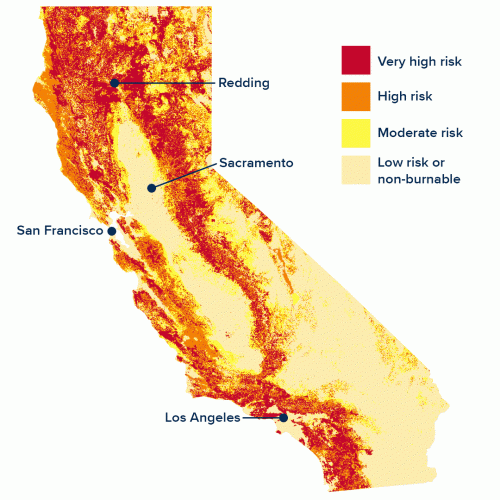The House That Doesn’t Burn: Turning Mud into Wildfire Resilient Housing
Turning Mud into Wildfire Resilient Housing
Author: Kat Kerlin
Published: June 30, 2021
Wildfire, in one way or another, touches nearly everyone who lives in California and, increasingly, the West.

Those of us living in California last fall can recall awakening to orange skies and smoke that blanketed nearly the entire state. Even if our home was untouched, we experienced the effects of wildfire. We inhaled them. We swiped them off our car in white, singed flakes. We dread them now.
More than 2.7 million Californians live in places with a high or extremely high risk of wildfire, as of 2007. That number is expected to increase, as the state is now updating its Fire Hazard Severity Zone maps. Since the maps’ creation, California has gotten hotter, drier, more populated and experienced its largest and most destructive wildfires in recorded history.
Wildfire has hit home in other ways, too. More than 200,000 people living in wildfire-prone areas received notice in 2019 that their insurance carrier would no longer be covering them. Too risky. There’s a moratorium on those non-renewal notices now, but the threat of insurance loss remains for millions of people.
Some people left. California reported a net loss of 135,600 people last year, for a variety of reasons. But most people stayed — nearly 40 million.
How do you make your home where disaster is a given? How do you learn to live with it?
A very old, new technology
Those questions are at the root of Michele Barbato’s research. He co-directs the UC Davis Climate Adaptation Research Center and is a professor of structural engineering. He’s trying to find ways to build affordable homes that can withstand most of what the planet throws their way.
“I started with some colleagues looking at a new way of building,” Barbato said. “We ended up looking back at a very ancient solution — something that’s been around for more than 10,000 years.”
That “technology” was mud, or rather an engineered form of it called compressed and stabilized earth blocks.
Read Kat Kerlin's full article on Dr. Michele Barbato's research on housing materials.